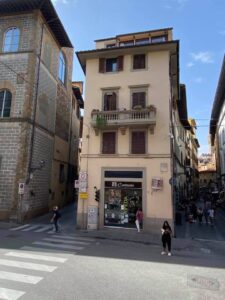Then it was time to hug my friend, bid her a teary goodbye, say Arrivederci, Roma, and take the short train ride to Florence. With a population of 360,000, Florence, or Firenze, is a tenth the size of Rome, and it feels very accessible. While it is old (founded as a garrison in 100 BCE), and it was once the capital of Italy, it is most identified with the explosion of art and culture during the Renaissance. Cars are not allowed into the Old City, so it’s easy to explore. Here’s some of what we saw. We stayed in a nice hostel with a private room and bath, a pool and a rooftop deck.

Relaxing at the hostel.

Brunch. We found a great little mom and pop cafe.


We like finding good food at a bargain.

Florence is green, lots of trees everywhere.

Most of the city walls have been demolished as part of urban planning, when they were replaced a few hundred years ago by wide leafy boulevards, but parts remain.

Across the Arno River the city climbs into beautiful neighborhoods like the one where Galileo lived and had his observatory in the 16th century.

All the bridges except one were bombed in WWII and have been rebuilt.

Narrow streets lead to the shops of craftsmen and women who carry on the artistic traditions of Florence.

Great views from the hills above the Arno.

Segments of the old city walls.

Looking down into the city center.

I think this was part of a Medici palace.

Residential buildings.

A remaining gate.

A newer part of the city surrounding the older core.

Friends say Florence is the best city for shopping, particularly jewelry and leather and art.

As we saw everywhere in Italy, buildings under renovation.

Motorbikes are popular here, as in Rome.

The Arno.



0 Comments